Razer Blade 16 (2025) review: as good as portable gaming gets
Razer's slimline gaming laptop wonder returns – and it's a real treat

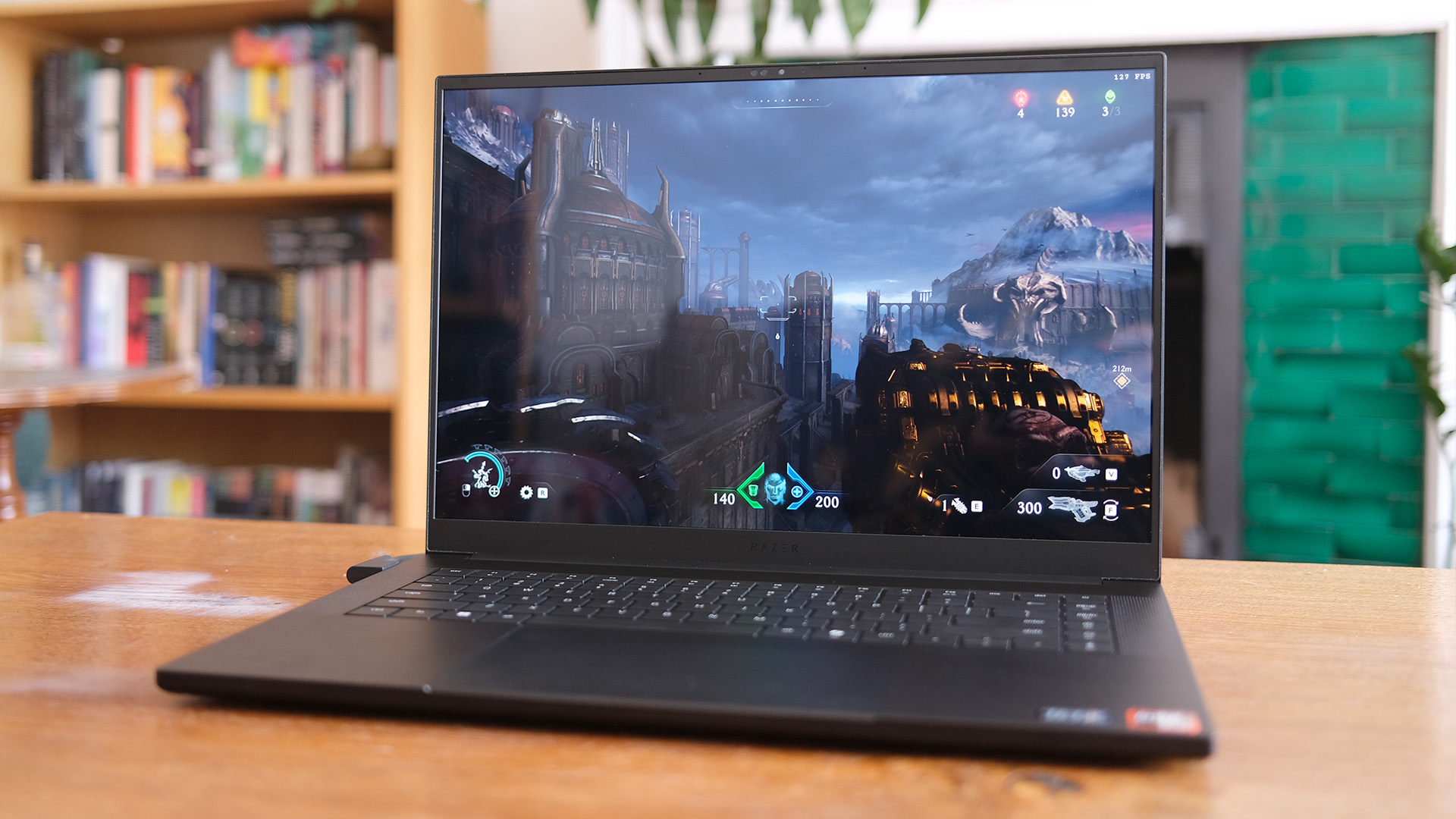
The 2025 revision of the Razer Blade 16 continues to amaze – it's a supremely powerful laptop squeezed into a body that rivals a MacBook Pro. This is close to being as subtle as gaming laptops get – green Razer logo excluded, of course – and is a terrific premium option for those looking to stay stealthy, yet get the utmost from their gaming sessions.
-
+
Gorgeous design
-
+
Oozes power
-
+
Great keyboard and trackpad
-
-
Very pricey
-
-
Finish attracts fingerprints
Why you can trust T3

Surveying the best gaming laptops on the planet over the last decade, you really can't understate how impressive Razer's rise has been. It's gone from a gaming accessory maker to a hardware contender, and produces a lineup of Blade laptops that have become the targets to beat for slimline gaming power.
Much like how Apple operates, these laptops don't get radical redesigns very often, with smaller tweaks and internal upgrades being the preferred route. So, in mid-2025, we have a new Razer Blade 16 – although, at first glance, it looks a lot like the last one. I've used it for a week to see how it threads the needle between size and power.
Price & Availability
The 2025 version of the Razer Blade 16 is available to buy now, and comes in at a seriously premium price. It starts from $2,999.99 in the US and £2,099.99 in the UK, but can range up to a whacking £4,299.99 or $4,499.99 for the top-spec model.
The biggest and most noticeable difference between step-ups comes in the form of your graphics, which can range from an Nvidia GeForce RTX 5060 all the way up to a 5090. Razer's site lets you customise your build pretty thoroughly, but you can also buy pre-configured versions from various retailers.
Design
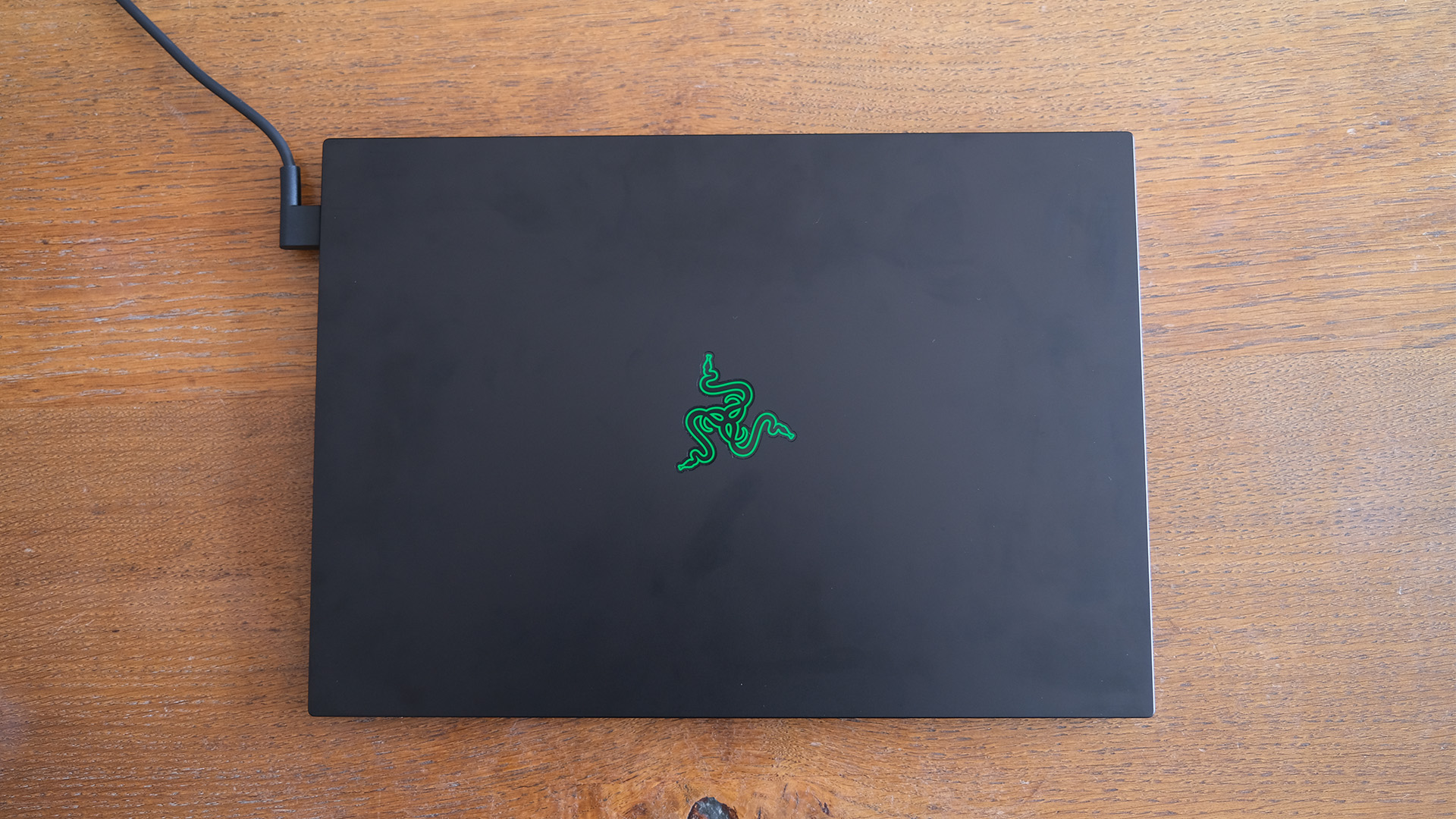
As I said in my introduction, take the briefest of glances at the 2025 Razer Blade 16 and you might think that it looks much like previous generations.
But you'd be missing some important changes this time around to take that view: Razer has slimmed down an already thin laptop considerably, realising its ambition that the Blade 16 should be almost improbably slim, given its contents.
In most places, the Blade 16 is less than 1.5cm thick, which means that it hardly registers once you put it into a backpack's laptop sleeve – although it's not the most lightweight, at 2.14kg (with some slight variation there depending on spec).
Get all the latest news, reviews, deals and buying guides on gorgeous tech, home and active products from the T3 experts
Still, it's up against other 16-inch laptops that are way, way chunkier, and blows almost all of these out of the water.
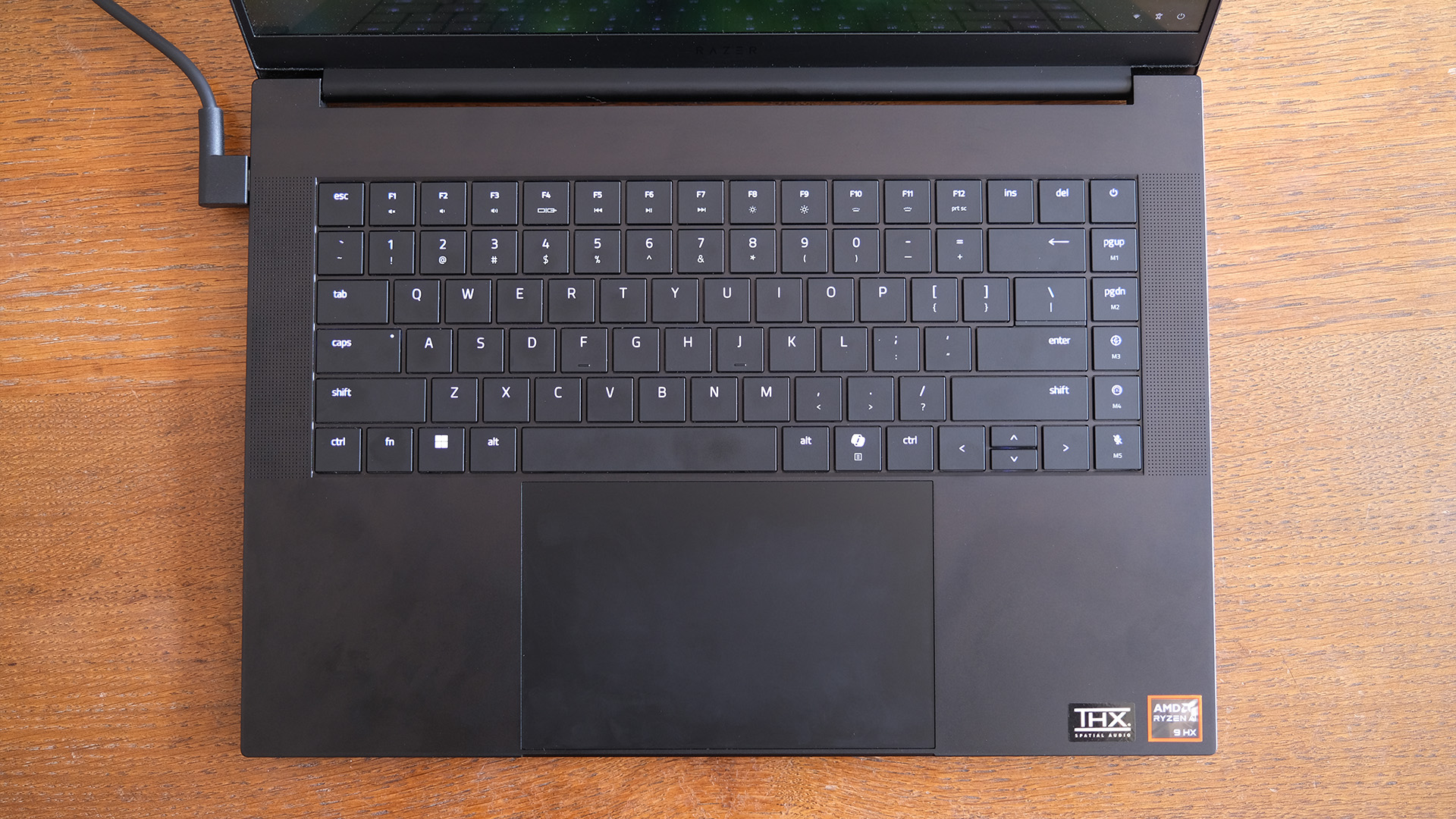
Particularly impressive is how thin its screen is, while still bringing specs that impress. When you open it up, that's matched by really slim bezels on all four sides, which enhances the obvious premium feeling. The whole thing is finished in lovely black metal, although I was a little surprised by how much this picks up fingerprints and smears.
The back of the display houses a green Razer logo, which I still don't love, but other than that, this is as subtle as they come. Still, I do prefer Asus' ROG Zephyrus G14 for its looks, with that diagonal slash looking really classy and more distinctive.
Razer obviously has practical sides to its design, too. On the left side of the laptop, you'll find its charging port, two USB-A ports, a USB-C port and a headphone jack. The right side houses an HDMI port, another USB-A and USB-C port, and a full memory card reader. There are no ports on the rear, largely because it's too slim to actually house any.
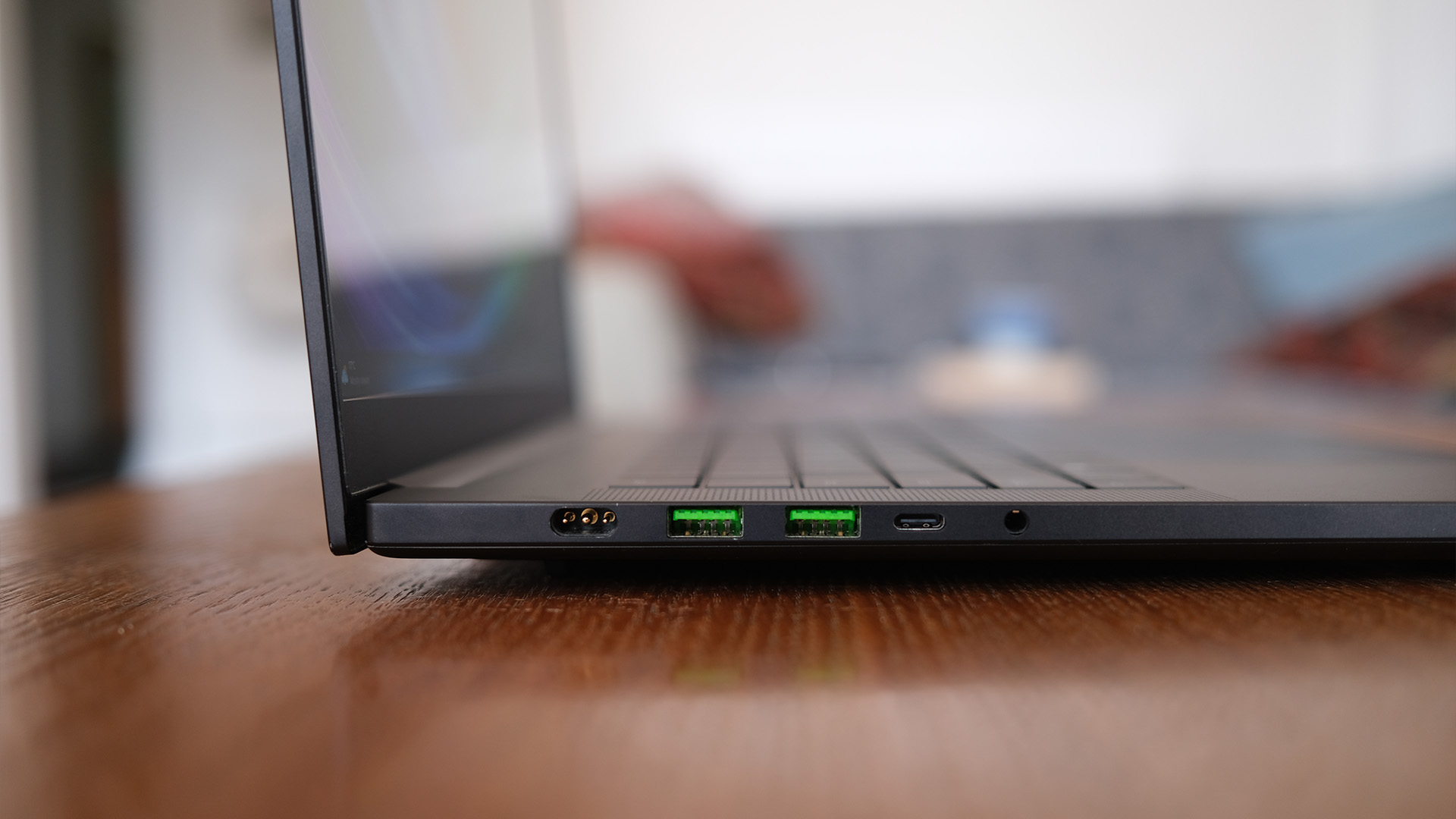
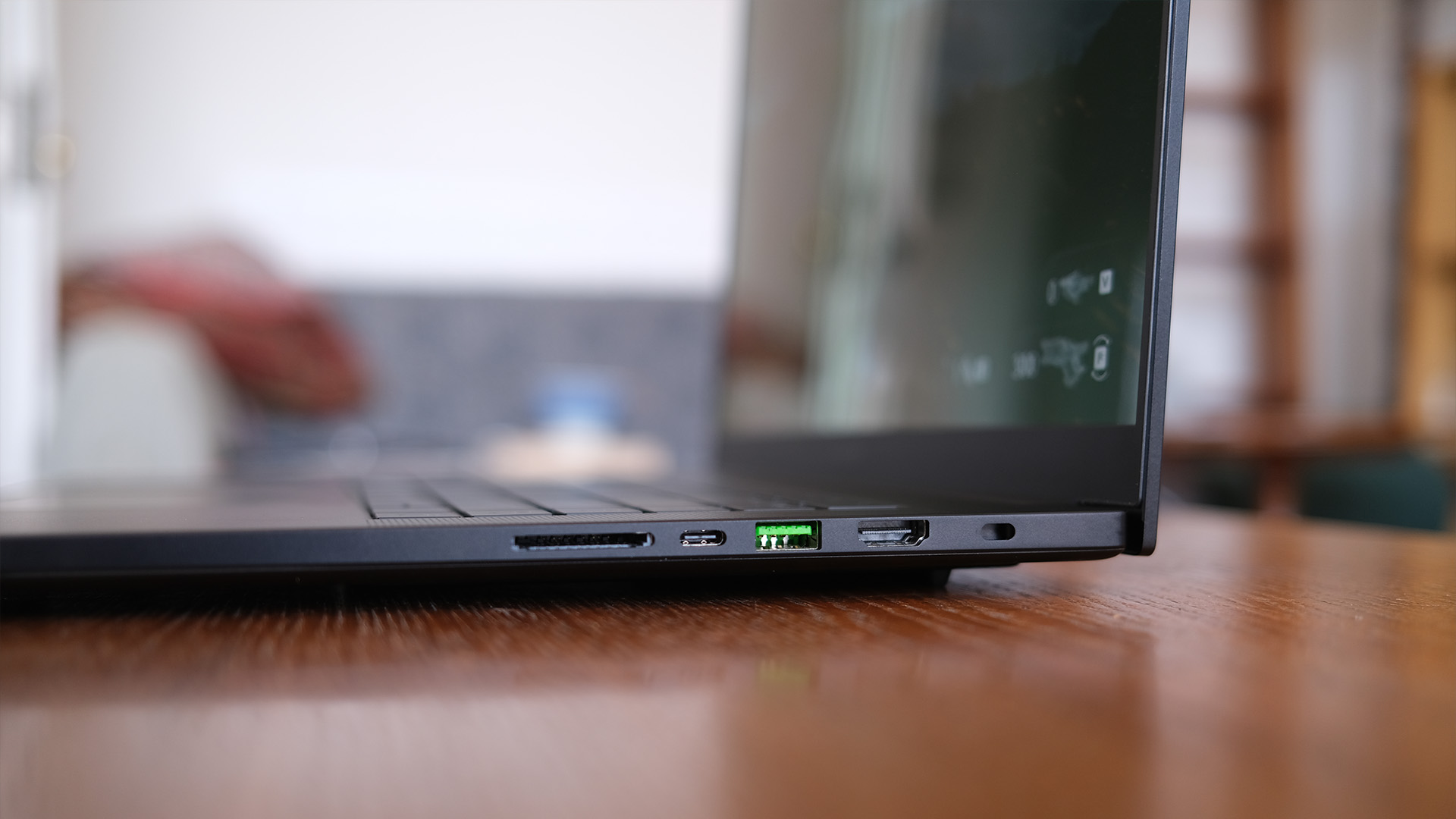
If you're aiming to game at home for the most part (which is the secret truth of the gaming laptop life), the lack of an Ethernet port might sting, but you're almost certainly going to want a desktop dock regardless, so this is hardly a huge loss.
Open the laptop up, and you'll be greeted by one of the best portable keyboards out there. It's tenkeyless, and therefore really spacious with good travel distances. The row of functional buttons on the right edge has also been given extra macros for performance tweaks, which I appreciate.
Speaker grilles flank the keyboard, and below it resides an exemplary and large trackpad, which is as good as I've tested on a gaming laptop.
To sum that up then, on the design front, the Blade 16 is a bit of a home run – it slims things down to an improbable level for its size, without seeming to compromise much. It's great to carry, but crucially also great to actually use, even without wireless accessories.
Specs & Features

Of course, you don't pay north of a couple of thousand for a laptop just for how it looks and feels – what it has going on under the hood is key, too. Here, Razer isn't skimping either.
The version I tested for a week featured an Nvidia GeForce RTX 5090 Laptop GPU, which you can basically file in your head under "the best possible laptop GPU on the market right now". It's a total beast, and pumps the price of the laptop up significantly, but delivers stellar gaming performance – as I'll get to later.
That's paired with an AMD Ryzen AI 9 HX 370 processor, which means that this laptop should be able to chew through basically any task you throw its way. It also ensures there's acceptable built-in graphics for simpler games if you want to game on battery in a more power-efficient way.
In fact, Razer has concentrated on this side of things a little, adding a system that will clock down your games to a 30fps cap when gaming on battery if it detects that you're on a static or low-motion screen (like a menu or dialogue screen). This can help with efficiency hugely, and the boosted in-built graphics can last for around 2 hours on battery if you want.
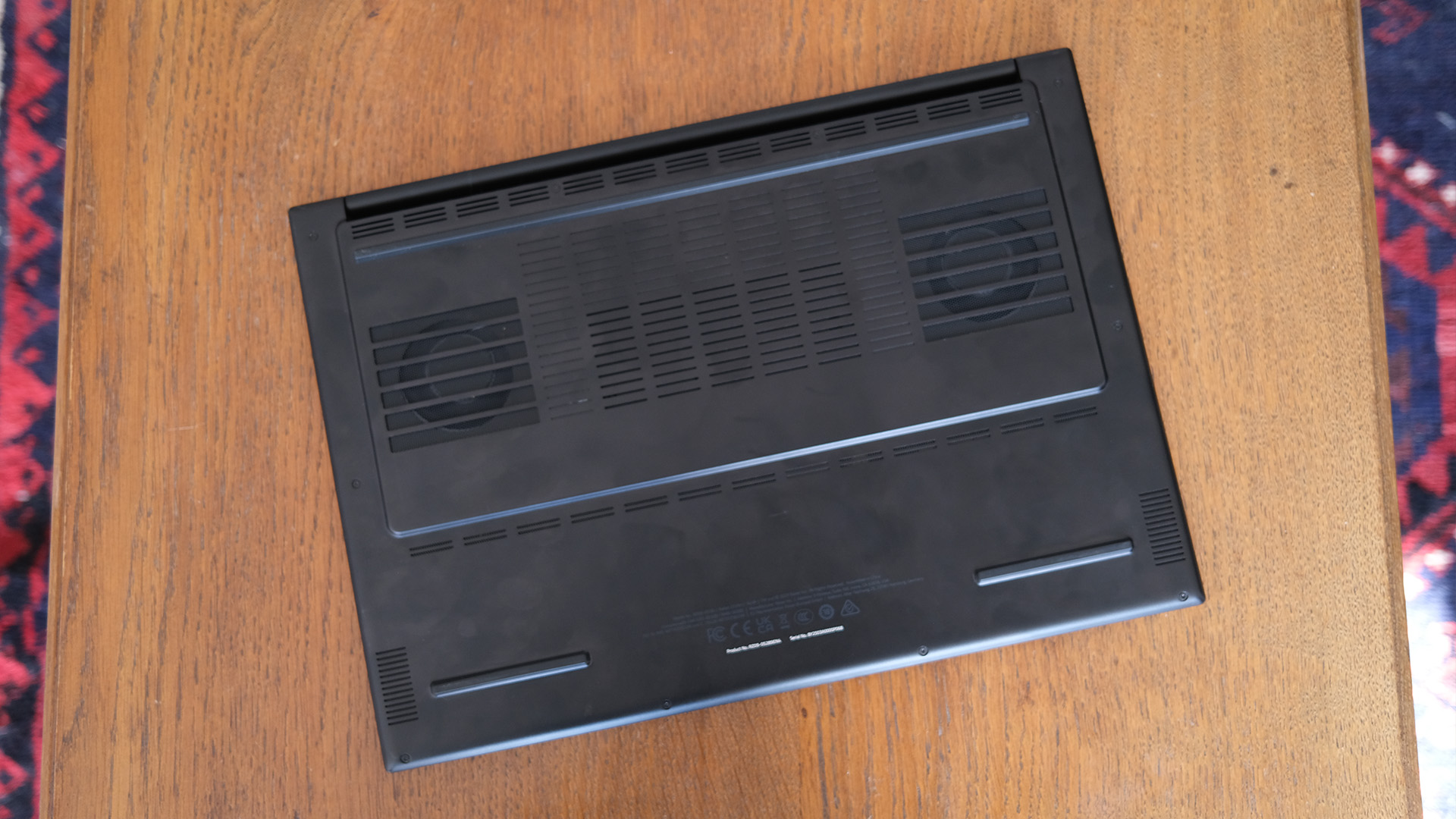
That's an impressive measure, although you will find that hungrier modern releases do have compromised performance compared to that which you'd get from the 5090.
Moving on, you can get up to 4TB of SSD storage if you like, although mine had the standard 2TB. The 32GB of DDR5 RAM seems like enough, too, but you can shrink this to 16GB or boost it to 64GB. Opening up the back of the laptop reveals an M.2 2280 SSD slot for more storage if you want it.
On the connectivity side, you have a MediaTek Wi-Fi 7 MT7925 for Wi-Fi, along with Bluetooth 5.4 – so you're not going out of date any time soon for wireless connections. There's a 1080p webcam that is Windows Hello-compatible for quick logins and video calls.
Those speaker grilles hide parts of a six-speaker array that's THX-certified, and they perform just fine. Very few people would aim to use a gaming laptop's speakers other than in a pinch, and these won't persuade you otherwise, but they do the job ably.
Performance

Generally, in gaming laptop reviews, I blitz right past battery life to discuss the gaming performance, but in Razer's case, it's worth dallying on briefly. If you use the Blade 16 for general work and productivity, its chip's efficiency, paired with a 90Whr battery, means you can expect north of 6 hours of use (comfortably).
Start gaming on battery and you'll immediately curtail that, but this does mean that taking the laptop to a cafe for some work, or on a train or plane with the same aim, is actually feasible. That's rare in this market.
Of course, that still leaves the real question of how it performs when plugged in with its 5090 activated, and the answer lines up with other 50-series laptops I've tested. The Blade 16 is a beast in this specification, in short.
Over the last few weeks, I've been using Doom: The Dark Ages as the perfect benchmark game for new laptops. It's visually impressive, but also has oodles of settings to play with – and forces the use of ray-tracing, putting it on the bleeding edge.
Running at its native 2560 x 1600, the 2025 Blade 16 absolutely destroys the game, in no uncertain terms. On maximum settings with no frame generation, I was seeing frame rates of 120fps or so; turning frame generation to 2X, this leapt up to around 170fps; on 3X, it hit 220fps on average; at 4X, that went all the way to 270fps.
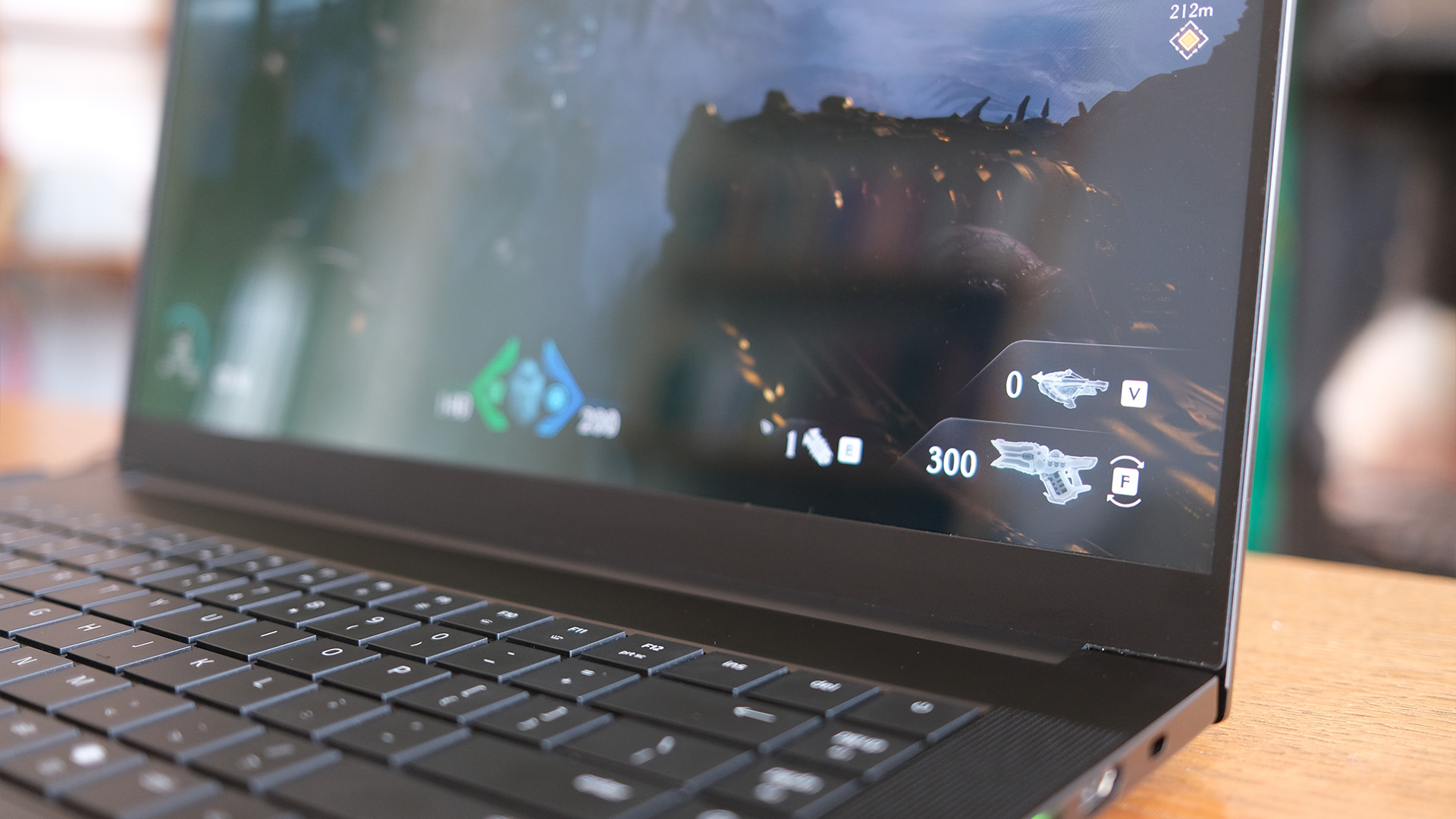
Those are jaw-dropping numbers in a game released this month that flourishes at high frame rates, and they leave you free to game however you like. If you're sceptical of frame-gen tech, you don't need it for stunning performance. If you're happy to embrace it (and I'd argue that you definitely should be if you get a 50-series card), then it can more than double your return in the Blade 16.
The fact that you'll enjoy that smoothness on a QHD+ 240Hz OLED display makes it all the more breathtaking – this is about as good a display as you could choose to find. It has the inky blacks for which OLED is rightly renowned, and a refresh rate ceiling that you won't really need to exceed. My only nitpick is that it's pretty reflective, which is a common complaint – some sort of nanotexture would feel commensurate with the price Razer demands.
Fan noise when the machine is under load can't be ignored – it's part of how Razer manages to squeeze so much out of a machine this size. However, I have to admit to being impressed here, too. The noise you get in the Blade 16 (2025) is no more outrageous than that I've experienced in bigger laptops like the Acer Predator Helios Neo 16S, and therefore entirely tolerable.
A similar story plays out from the speakers, too. They're nothing spectacular, to be honest (although I don't think they have to be). They won't make you ignore your pick from the best gaming headsets available to you, but they're also fine if you need them.
Razer Blade 16 (2025) review: Verdict
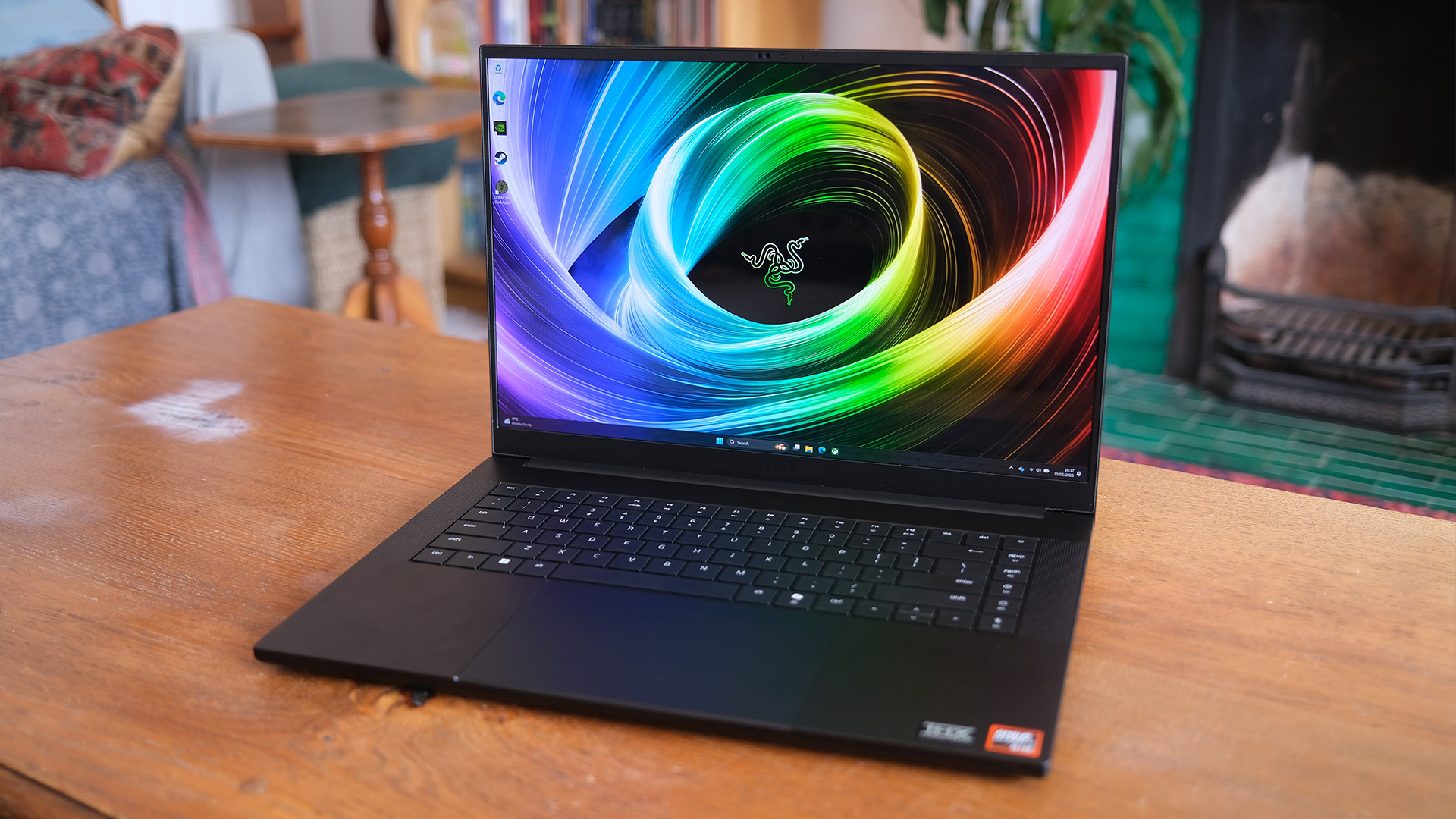
The 2025 revision of the Blade 16 is pretty hard to impeach – it's slimmer than ever, has a great keyboard, a stunning display and, basically, whichever card you put in it, runs games like a dream.
Yes, it's a little loud and undeniably priced at a super-premium level, but this laptop is aimed at those who want no compromises. For such people, it's a superb bit of kit that should last for years without losing its edge, crunching through new releases and complex workflow tasks with ease.
If you've got the cash and a Razer has always tempted you, then the Blade 16 is a superb new model that has little compare. It's a total stunner in every way.
Also consider
The other big name in the ultra-slim gaming laptop market right now is Asus, thanks to the superb ROG Zephyrus G14. The G16 is right there, too, as a slightly bigger option, and I prefer their design a little to Razer's. The specs are directly comparable, making this a matter of taste.
If you want to keep costs lower, though, there are plenty of other options out there with chunkier bodies. Acer has the Predator Helios Neo 16S, which is slim compared to some laptops but practically fat when lined up next to the Razer – still, it's cheaper and therefore a good option at one small step down in budget.

Max is T3's Staff Writer for the Tech section – with years of experience reporting on tech and entertainment. He's also a gaming expert, both with the games themselves and in testing accessories and consoles, having previously flexed that expertise at Pocket-lint as a features editor.
You must confirm your public display name before commenting
Please logout and then login again, you will then be prompted to enter your display name.